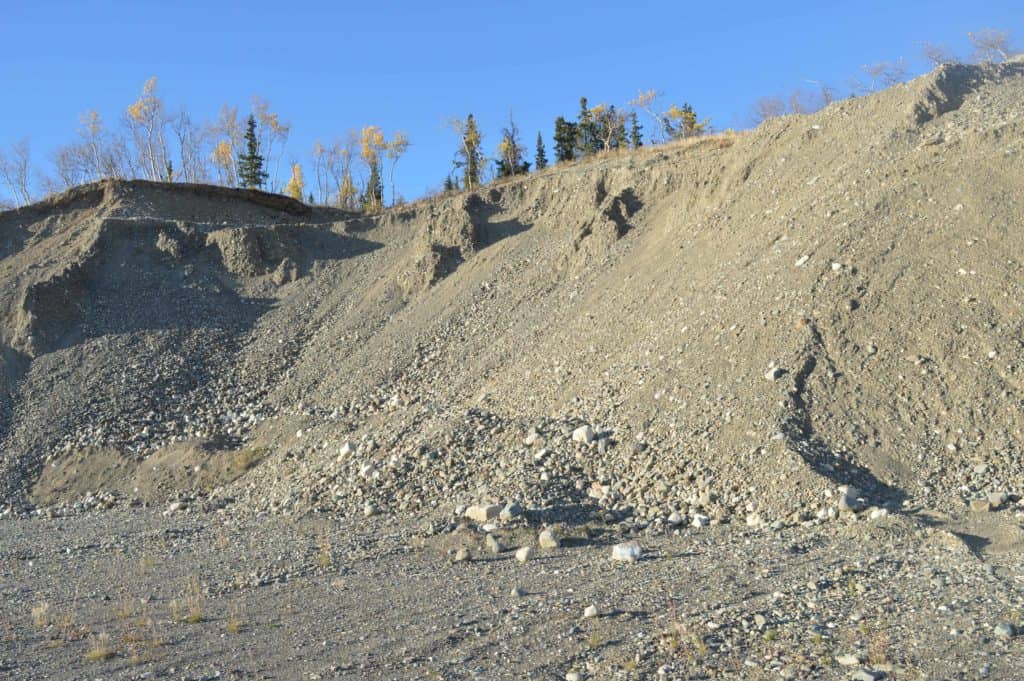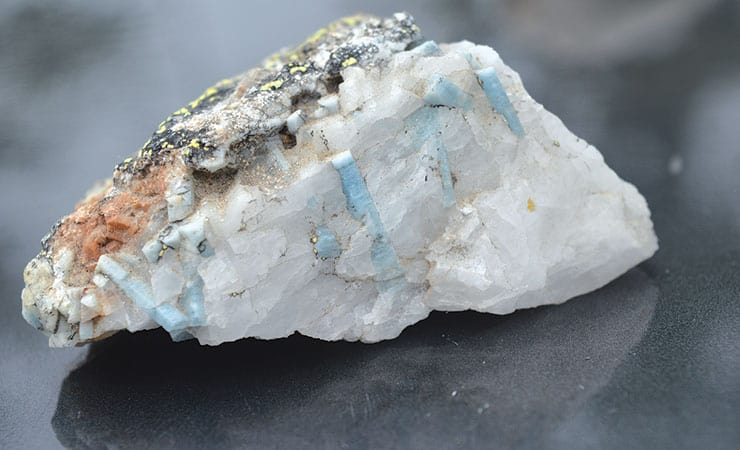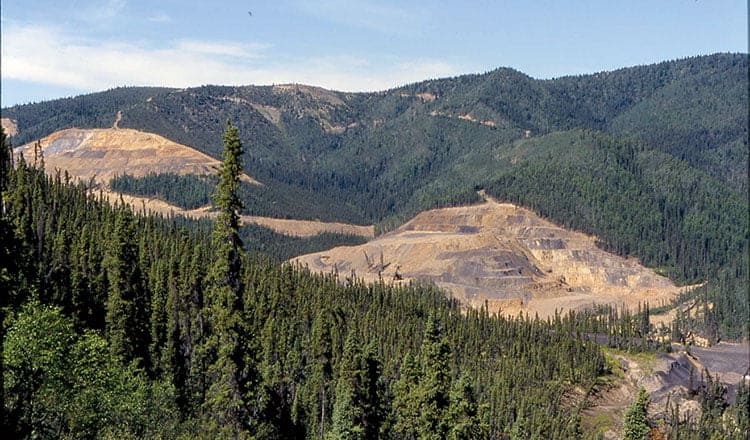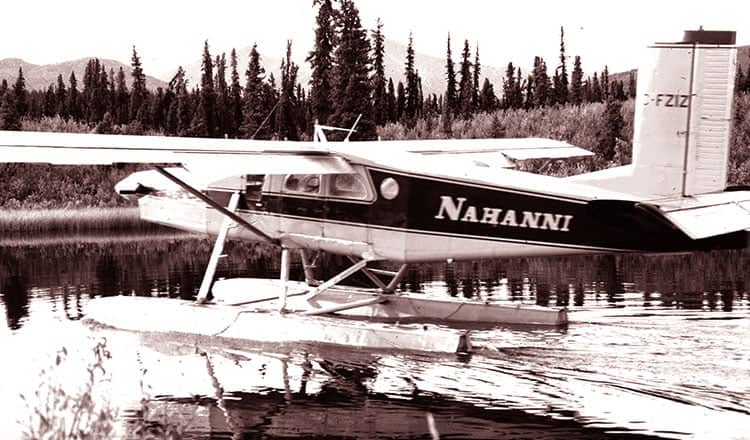Columnar joints, that is.
There is a geological feature that has caught human imagination for tens of thousands of years. It has been given names, where it has appeared in different parts of the world, including the Devils Postpile, Titan’s Piazza, Los Organos and the Giant’s Causeway. All are spectacular examples of what is called columnar jointing. We have our own here in the Yukon.
Columnar joints occur when volcanic basalt erupts to the surface and starts to cool. Under the right conditions, it fractures into a regular pattern of six-sided hexagonal shapes. Individual columns can range from less than 50 centimetres to more than three metres across.
Basalt is by far the most common volcanic rock to form columnar joints. When the basalts erupt to the surface, they can quickly form a pool of hot molten rock that measures many metres thick. This provides a large homogenous mass that contracts as it cools.
Scientists have collected cores of basalt from the Svartifoss (Black Falls) columnar basalt site in Iceland. In a lab, these cores were heated up to 1200 degrees Celsius, until the basalt melted, and then allowed to cool. Scientists found that around 870 degrees Celsius, the rock was solid enough to start fracturing. The slower the cooling, the larger the individual columns tended to be.
The chemistry of the basalt can have something to do with the formation of columns, but by far the major factor is the cooling rate. Cooling is controlled by the size and thickness of the molten rock. The pattern of fracturing is the most fascinating feature. Looking down from above, you see a series of three fractures forming from many points. The pattern is in the shape of a “Y.” Under ideal conditions, all the angles would be 120 degrees apart, creating a perfect honeycomb. Irregularities commonly occur in the form of five and seven-sided polygons, or, more rarely, three and four-sided ones.
This pattern not only occurs in rocks, it also occurs in permafrost-influenced soils and in mud cracks on dry lake beds. Ice wedge polygons are common in the arctic where the active layer of the permafrost expands and contracts seasonally, fracturing the soil and forming hexagons. Ice wedge polygons can be several metres across.
Why these materials fracture in such a regular pattern is still not known for certain. The process can be described with complex mathematic formulas based on hexagonal patterns maximizing the area-to-fracture ratio. You can have more fun by making your own columnar joints though.
Someone discovered that corn starch will, under the right conditions, dry out and crack into perfect hexagonal columnar joints. Try it yourself by mixing corn starch and water in equal weights, then setting it aside to dry in a pan. I have tried it twice and have yet to be able to duplicate the exact conditions to develop perfect hexagons, but both times, definite regular fracture patterns formed.
Throughout a number of locations around the world, conditions have been ideal for the formation of stunning examples of columnar joints.
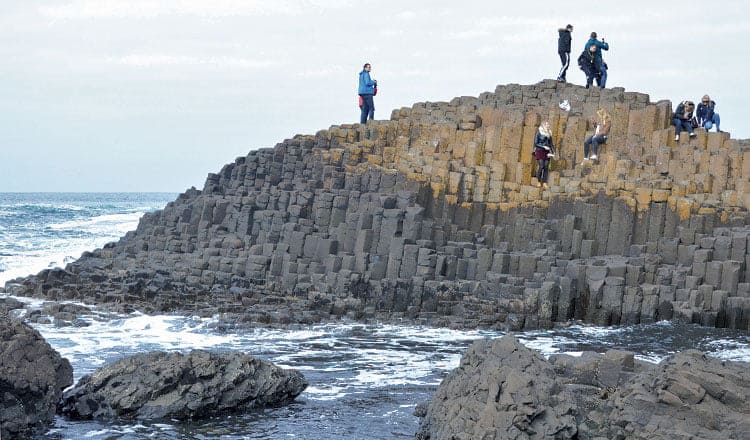
Giant’s Causeway in County Antrium on the northern coast of Ireland is a UNESCO World Heritage Site. Legend has it that the great warrior leader Fionn mac Cumhaill (Finn McCool) was starting to build a causeway across the water to Scotland. He wanted to get to his foe, the giant Benandonner, but turned back when he saw how big Benandonner was.
Giant’s Causeway formed 60 million years ago when lava flowed down a valley until it dammed up and formed a molten lake 90 metres deep. There were several other eruptions that formed many other features you can see at the site. On the Isle of Staffa, on the Scottish side across from Giant’s Causeway, is Fingal’s Cave. Like Giant’s Causeway, the columnar joints seem to form steps coming out of the sea. The two locations actually formed from the same geological event.
The unique feature at Staffa is a sea cave that is lined entirely with perfect columnar joints. The Celtic people named the location “Uamh-Binn” or Cave of Melody due to its unique acoustics. It has inspired songs from diverse artists such as Mendelssohn and Pink Floyd. Jules Verne visited the site in Victorian times. That visit inspired some of the fantastic settings that show up in many of Verne’s novels.
At Devil’s Postpile in the Sierra Nevada Mountains of California, basalt erupted around 100,000 years ago. The basalt formed a lake over 120 metres deep. It then solidified into a mass of columns up to 20 metres high and more than a metre across. The location is near the crest of the Sierra Nevada Mountains, near a low pass that has been used as a trading route since humans first came to the area. Indigenous artifacts found there have been dated at around 7,500 years old.
Devil’s Tower in the Black Hills of Wyoming was originally named Bear Lodge, or Tree Rock, by the Cheyenne, Lakota, and Shoshone peoples who first inhabited the area. They all have fascinating legends on how the feature was formed. The area is considered a sacred site and is still used for traditional ceremonies. Even extraterrestrials are drawn to the mountain. The climax of the 1977 classic movie “Close Encounters of the Third Kind” occurred at Devil’s Tower. The mountain is almost 400 metres tall and the size of a football field on top. Geologists have several different theories on how it formed. Rather than basalt, it is made of a rarer rock named phonolite. The rock sounds like a bell when struck with a hammer, thus its name.
Locally, we have our share of locations to see columnar jointing. The most accessible are the columnar basalts in Miles Canyon, right near the suspension bridge. In his 1883 expedition down the Yukon River, Frederick Schwatka described what he called the Grand Cañon of the Yukon. “The walls of the cañon are perpendicular columns of basalt not unlike the diminutive Fingal’s Cave in appearance … ” he wrote.
Geologists with the Yukon Geological Survey have dated the basalts at Miles Canyon at around eight to nine million years old. Similar (though younger) basalts of the same unit occur near Alligator Lake and Ibex Mountain. Near Alligator Lake, flows are up to 300 metres deep. The thickest flows exposed in the Miles Canyon area are on the river below the dam. They are 20 metres thick.
There are also good columnar joints visible from the Alaska Highway just west of Rancheria. Those flows are related to the columnar joints you can see high on the bluffs at the confluence of the Pelly and Yukon Rivers, across from Fort Selkirk. These basalts are known as the Selkirk Volcanics and are two to three million years old. One of the very best areas to see excellent columnar joints in our area is the road into Telegraph Creek, B.C. There will be a future Backyard Geology article on the amazing volcanic rocks in this area.
One of the most fascinating parts of geology is observing how nature can produce such beautiful symmetry. It is evident all the way from the microscopic beauty of crystal formation to the large-scale regularity and order of columnar jointing.

